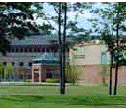






















|
| Electrodynamics Field Strength The electrostatic potential V satisfies a Poisson equation given as
where
Particle Drift in an Electric Field The equation of motion of a particle in an electric field is given by
where the forces are due to drag, gravity, and electric field. Equation (28) may be restated as
Equation (29) may be restated as
where
where
If
In addition to the gravitational and electrical forces, particles could experience forces induced by temperature gradient, concentration gradient, and electromagnetic radiation. These are discussed in the next section. |


|


 , (26)
, (26) is the space charge per unit volume. Then electric field is given as
is the space charge per unit volume. Then electric field is given as  , (27)
, (27) , (28)
, (28) , (29)
, (29) , (30)
, (30) . Suppose
. Suppose  is in the same direction as
is in the same direction as  ,
non-dimensionalizing with respect to
,
non-dimensionalizing with respect to  , (31)
, (31) ,
,  (32)
(32) , then the electrical force dominates. In this case, if the inertia is also neglected, we find
, then the electrical force dominates. In this case, if the inertia is also neglected, we find or
or  , (33)
, (33)